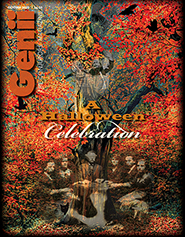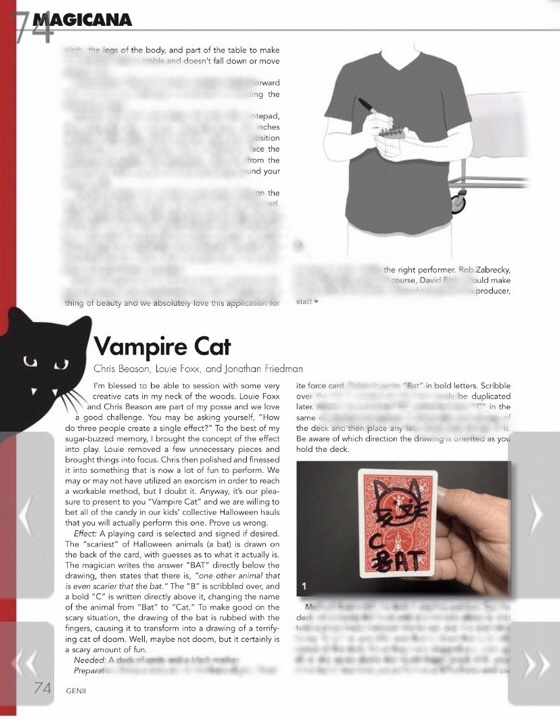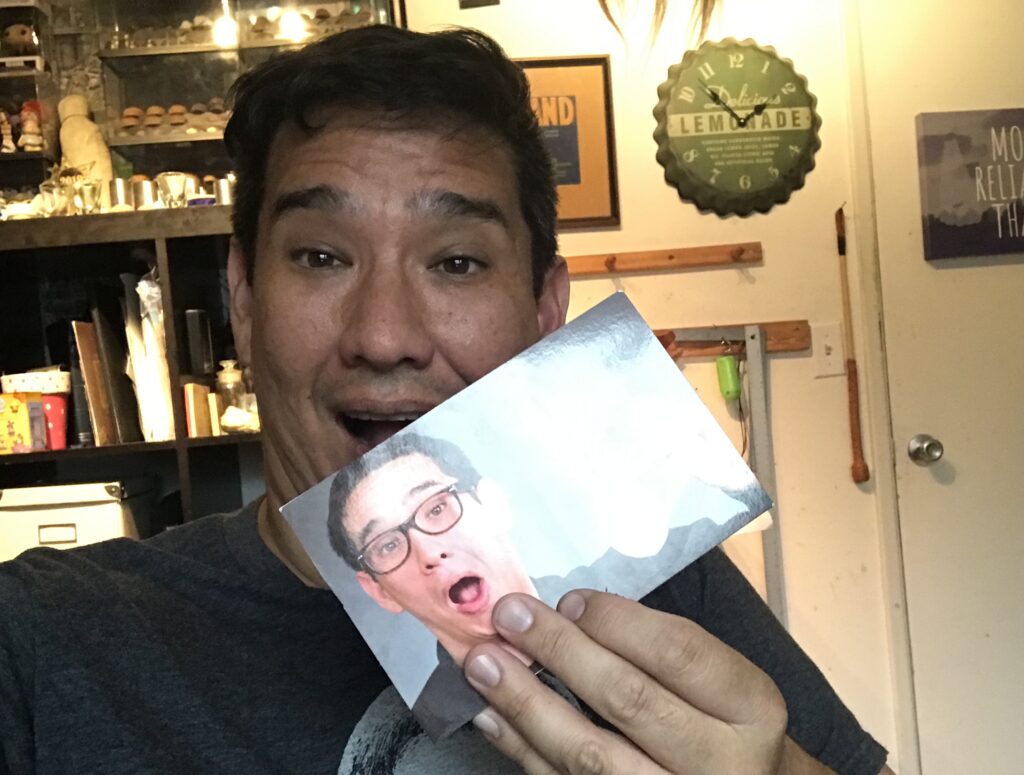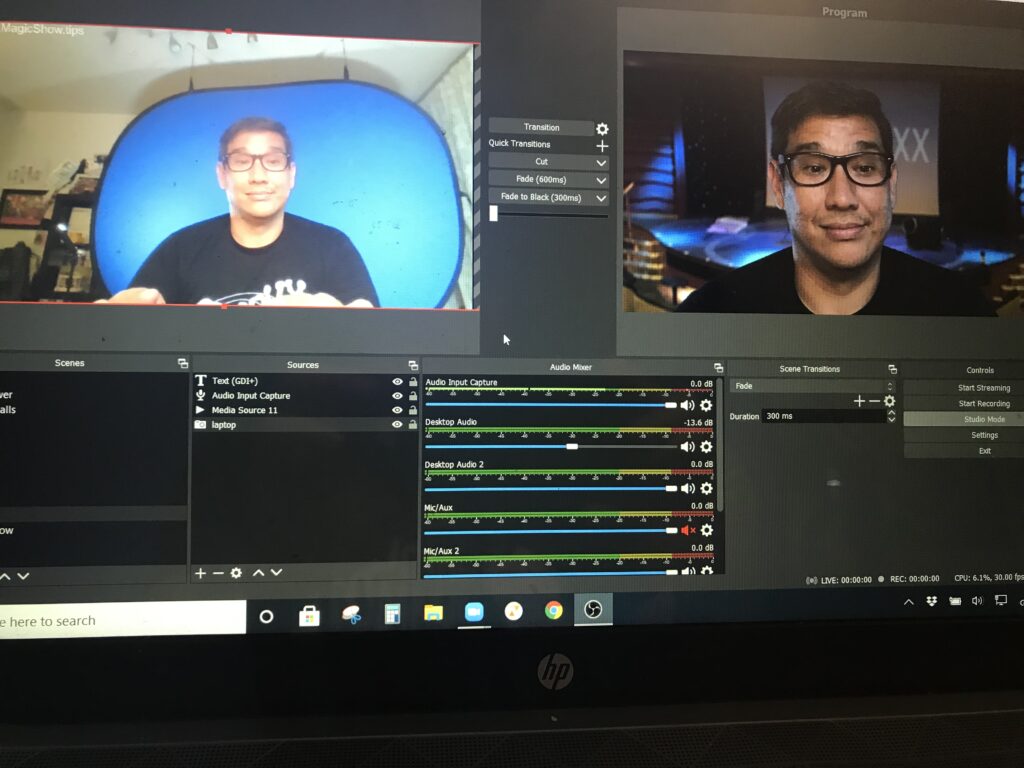In May I started worked on a trick that was my version of Albert Goshman’s Cards Thru Newspaper. You can search for those blog posts, but it shows how the trick progressed from the original Goshman trick to what I’d now consider an original magic trick/routine.
Essentially the original trick is that four cards appear one at a time and reappear under a folded up piece of newspaper. I took out what I didn’t like, the cards and newspaper and ended up using an envelope and four polaroid pictures. The pictures disappear and reappear under the newspaper.
It’s been five months since I started working on it, and really, it should have progressed further, it’s been slow going, mostly because of laziness on my part and not putting in as much work on it as I should be. I’ve been doing it as “preshow” for some virtual shows, but really I should be out at virtual open mics doing it and working it in.
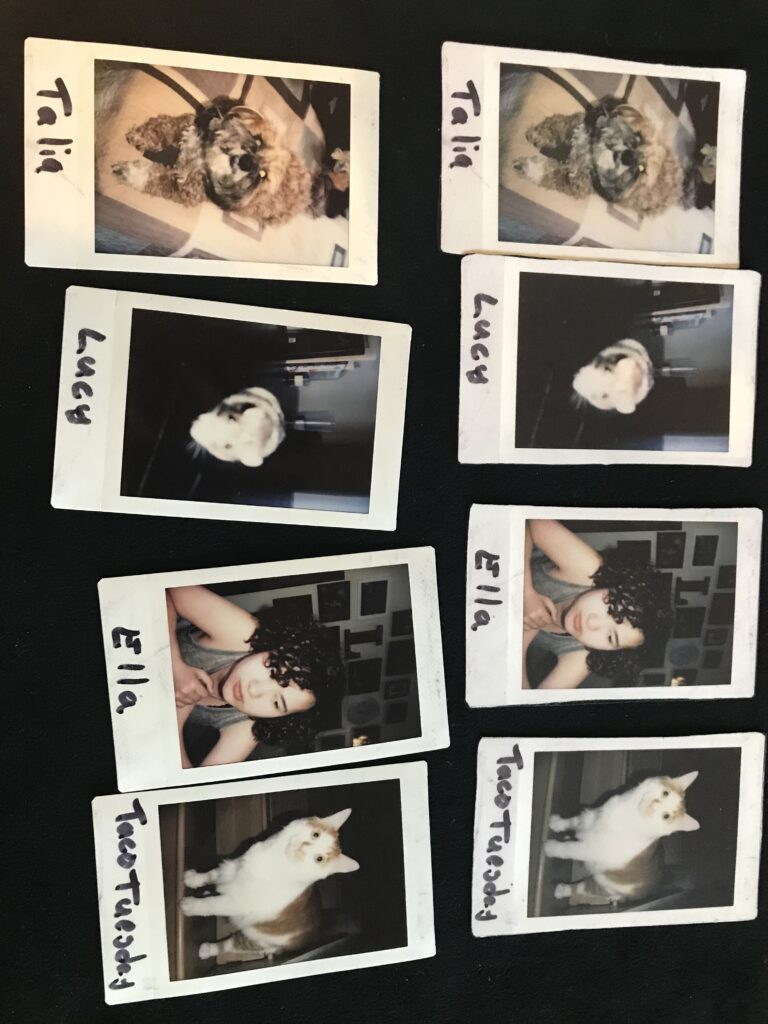
I did recently make a change. I’ve been using this trick in pre-recorded virtual shows lately and a problem the trick had was the problems is that the Polaroid pictures are soo glossy, that they are hard to see on camera. They reflect too much light, and you can’t see them clearly. I took some brochure paper and printed the Polaroid pictures onto that paper. It’s a semi-gloss paper, so while it’s shiny, it doesn’t reflect nearly as much as the actual Polaroid picture.
The row on the left are the real Polaroids and the right are the copies. When they are side by side you can see the copies are a little less vibrant than the originals. However without a side by side comparison, you really can’t tell.
Keep working on your magic, even if you’ve been doing a trick for years and it’s a polished routine. There’s usually still improvements that can be made. Sometimes these are small improvements that no one will really notice, but these little things add up!

